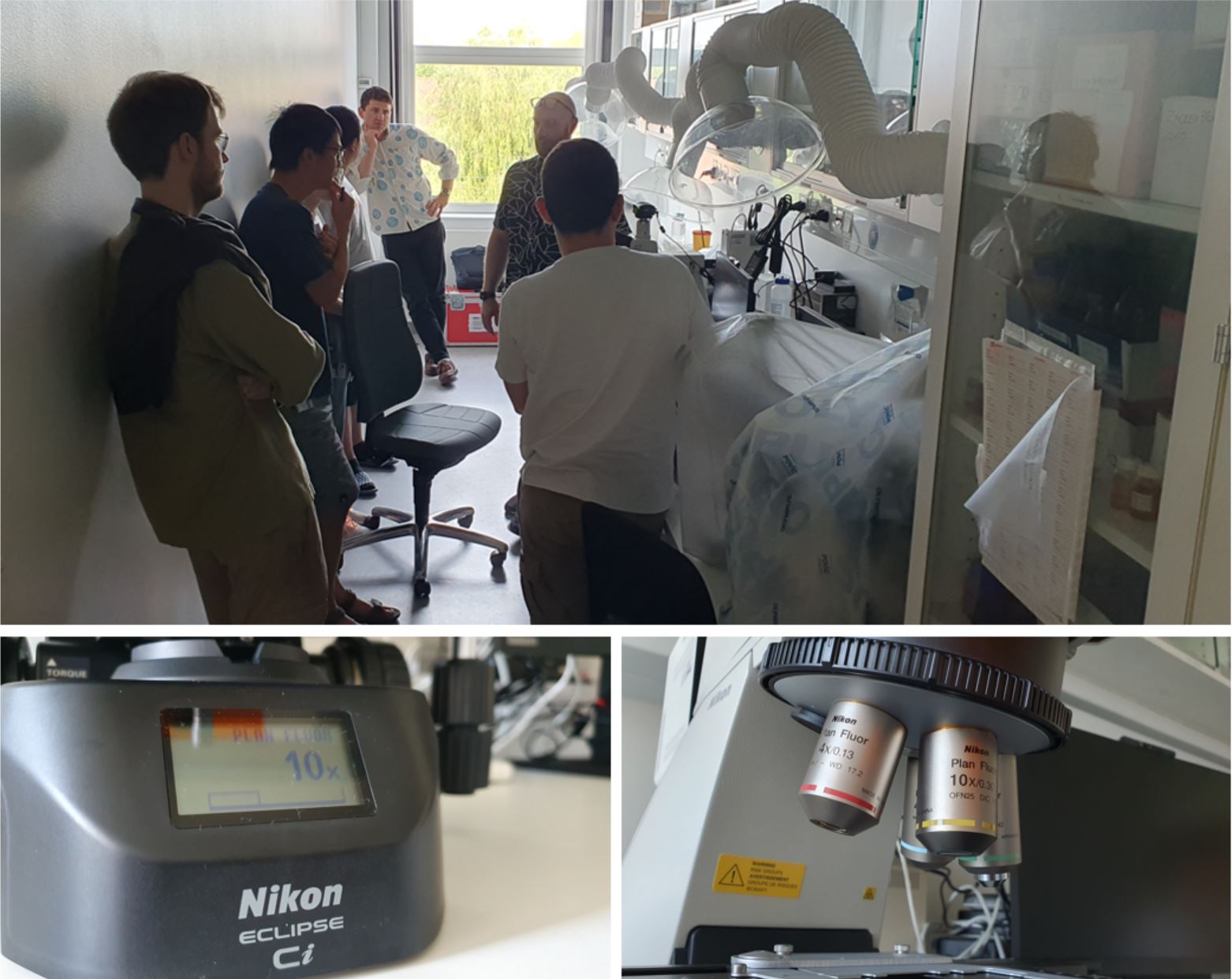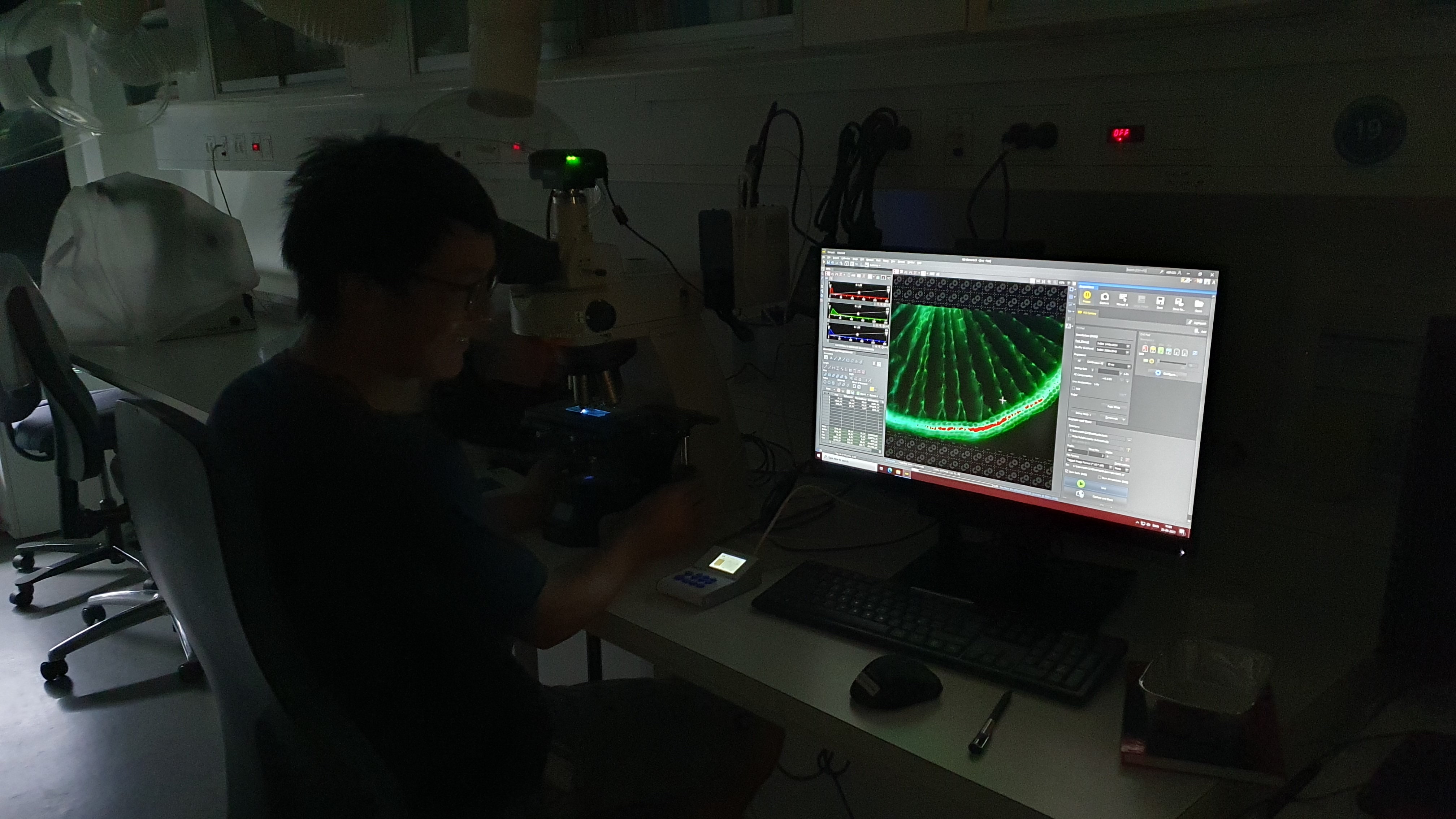An Instrument of Precision: The Nikon Epifluorescence Microscope
The acquisition of this remarkable microscope would not have been possible without the financial support from the Department of Biology. Through their infrastructure grant, they recognized the importance of investing in cutting-edge equipment that enables scientists to push the boundaries of knowledge. This forward-thinking approach ensures that our department remains at the forefront of scientific discovery and reinforces our commitment to advancing the field of plant biology.
Suberin and lignin, two crucial components found in plant tissues, have long fascinated researchers due to their roles in various physiological processes. Suberin acts as a protective barrier, preventing water loss and shielding against pathogenic invasions, while lignin provides structural support to the root but likely also contributes to the exodermal apoplastic barrier. Understanding the intricate distribution and composition of these compounds within plant tissues can shed light on vital aspects of plant development, stress responses, and disease resistance.
The Nikon epifluorescence microscope boasts exceptional sensitivity to fluorescent signals, allowing us to visualize the distribution and accumulation of suberin and lignin with enhanced precision. By employing specific fluorescent dyes and staining techniques, we can label these compounds and observe their spatial distribution within plant tissues. This imaging capability provides invaluable insights into the localization of suberin and lignin, helping us unravel their functions and dynamics in various plant structures.
With this cutting-edge microscope at our disposal, we anticipate exciting opportunities for interdisciplinary collaborations both within and beyond our department. The ability to visualize and analyze suberin and lignin dynamics with unprecedented precision will foster collaborations with researchers from fields such as ecology, genetics, and biochemistry. Together, we can expand our understanding of the complex interplay between plants and their environment, paving the way for innovative solutions in agriculture, biotechnology, and environmental conservation.

Training day by Nikon for PhD students and postdocs. We are really looking forward to start using the microscope for our research!
Suberin and lignin, two crucial components found in plant tissues, have long fascinated researchers due to their roles in various physiological processes. Suberin acts as a protective barrier, preventing water loss and shielding against pathogenic invasions, while lignin provides structural support to the root but likely also contributes to the exodermal apoplastic barrier. Understanding the intricate distribution and composition of these compounds within plant tissues can shed light on vital aspects of plant development, stress responses, and disease resistance.
The Nikon epifluorescence microscope boasts exceptional sensitivity to fluorescent signals, allowing us to visualize the distribution and accumulation of suberin and lignin with enhanced precision. By employing specific fluorescent dyes and staining techniques, we can label these compounds and observe their spatial distribution within plant tissues. This imaging capability provides invaluable insights into the localization of suberin and lignin, helping us unravel their functions and dynamics in various plant structures.
With this cutting-edge microscope at our disposal, we anticipate exciting opportunities for interdisciplinary collaborations both within and beyond our department. The ability to visualize and analyze suberin and lignin dynamics with unprecedented precision will foster collaborations with researchers from fields such as ecology, genetics, and biochemistry. Together, we can expand our understanding of the complex interplay between plants and their environment, paving the way for innovative solutions in agriculture, biotechnology, and environmental conservation.
Training day by Nikon for PhD students and postdocs. We are really looking forward to start using the microscope for our research!

